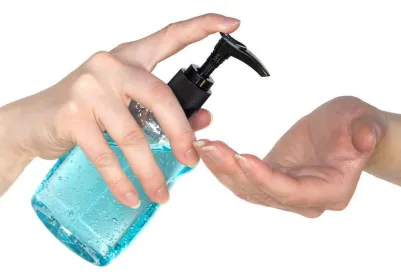In January 2021, the U.S. Environmental Protection Agency’s (EPA) Office of Enforcement and Compliance Assurance (OECA) announced that it issued a revised compliance advisory (Advisory) on products claiming to kill SARS-CoV-2, the novel coronavirus that causes COVID-19. EPA first issued this guidance on June 1, 2020, and it is discussed in our blog here.
The Advisory has been revised significantly, reflecting new developments and experience since the Advisory was first issued.
The first section of the Advisory addresses “Products claiming to be effective against the coronavirus causing COVID-19.” That title has changed, as well as the language throughout the Advisory, to refer now to products that are “effective against” the coronavirus, instead of products that “kill” the coronavirus.
EPA has added a new section entitled “What is the difference between an EPA registration number and an EPA establishment number?” Presumably, this is intended to address confusion among some with regard to this important difference. The Advisory now states:
An EPA establishment number is not the same as an EPA registration number. An EPA registration number signifies that the pesticide and its claims have been reviewed and approved by EPA. An establishment number identifies the EPA-registered location where the product was produced. EPA provides a National List of Active EPA-Registered Foreign and Domestic Pesticide and/or Device-Producing Establishments.
The section entitled “Devices that claim to kill the coronavirus” has been significantly modified. In particular, EPA has now deleted from the Advisory language that “ozone generators, UV lights and other pesticide devices may not be able to make claims against coronavirus where devices have not been tested for efficacy or safety for use against the virus causing COVID-19 or harder-to-kill viruses.” Instead, the Advisory states legal requirements applicable to devices, namely that the labels “include adequate warning and caution statements and directions for use” and have an EPA establishment number. EPA further adds the following: “Additionally, making false or misleading labeling claims about the safety or efficacy of a pesticidal device is prohibited and could result in the issuance of a Stop Sale, Use, or Removal Order and penalties under the Federal Insecticide, Fungicide and Rodenticide Act (FIFRA).”
In its “Compliance Concerns” section, EPA states it continues to pursue enforcement against products making false and misleading claims regarding their efficacy against the coronavirus, adding that it is “particularly concerned with pesticide and pesticide device products sold online on e-commerce platforms that are fraudulent, counterfeit, and/or otherwise ineffective.”
EPA has added new language to address a particular issue with regard to “residual” claims:
In the United States, it is unlawful to distribute or sell a pesticide which includes claims that it will kill a particular pathogen, unless that pesticide is registered by EPA and that particular claim has been deemed acceptable by the agency. In some instances, companies have unlawfully added additional claims to the labels of their registered pesticide products that have not been approved by EPA. For example, a claim for persisting or long-lasting effect against viruses, referred to as “residual claims” (i.e., claims that a product provides an ongoing antimicrobial effect beyond the initial time of application, ranging from days to weeks to months), may be accepted by EPA only when supported by acceptable studies demonstrating satisfactory residual efficacy. Until EPA approves a residual claim, it cannot lawfully be included on a registered product as part of distribution or sale. For more information on residual claims. For more information on registering products with residual claims, see EPA’s Interim Guidance.
Commentary
Of interest among the changes to the Advisory is the removal of the language stating that pesticide devices could not make claims against the coronavirus unless they had been specifically “tested for efficacy or safety for use against the virus causing COVID-19 or harder-to-kill viruses.” While any such testing may be necessary to demonstrate efficacy or appropriate directions for use, EPA had not previously stated what particular testing was required for devices or against what testing standard it would determine whether a device claim is “false or misleading.” It remains important for pesticide device producers to review carefully the data supporting the claims made for their devices to ensure that they comply with the regulatory requirements under FIFRA.




 />i
/>i

